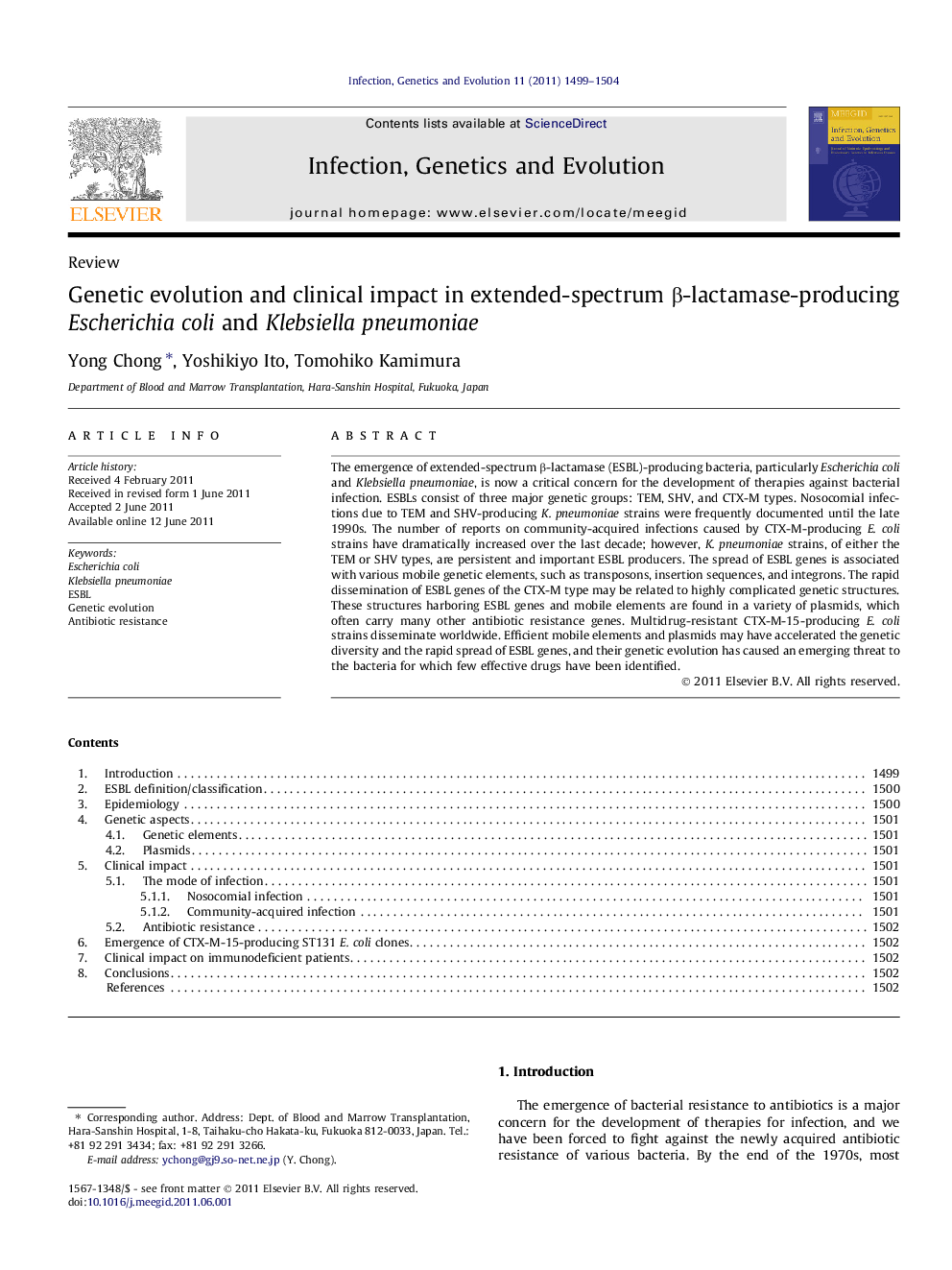| Article ID | Journal | Published Year | Pages | File Type |
|---|---|---|---|---|
| 5911546 | Infection, Genetics and Evolution | 2011 | 6 Pages |
The emergence of extended-spectrum β-lactamase (ESBL)-producing bacteria, particularly Escherichia coli and Klebsiella pneumoniae, is now a critical concern for the development of therapies against bacterial infection. ESBLs consist of three major genetic groups: TEM, SHV, and CTX-M types. Nosocomial infections due to TEM and SHV-producing K. pneumoniae strains were frequently documented until the late 1990s. The number of reports on community-acquired infections caused by CTX-M-producing E. coli strains have dramatically increased over the last decade; however, K. pneumoniae strains, of either the TEM or SHV types, are persistent and important ESBL producers. The spread of ESBL genes is associated with various mobile genetic elements, such as transposons, insertion sequences, and integrons. The rapid dissemination of ESBL genes of the CTX-M type may be related to highly complicated genetic structures. These structures harboring ESBL genes and mobile elements are found in a variety of plasmids, which often carry many other antibiotic resistance genes. Multidrug-resistant CTX-M-15-producing E. coli strains disseminate worldwide. Efficient mobile elements and plasmids may have accelerated the genetic diversity and the rapid spread of ESBL genes, and their genetic evolution has caused an emerging threat to the bacteria for which few effective drugs have been identified.
Highlight⺠ESBL-producing bacteria is a concern for the therapies against bacterial infection. ESBLs consist of three major genetic groups: TEM, SHV, and CTX-M types. The dissemination of ESBLs of the CTX-M type is related to complicated genetic structures. Efficient mobile elements accelerate the genetic diversity and the rapid spread of ESBL genes.
